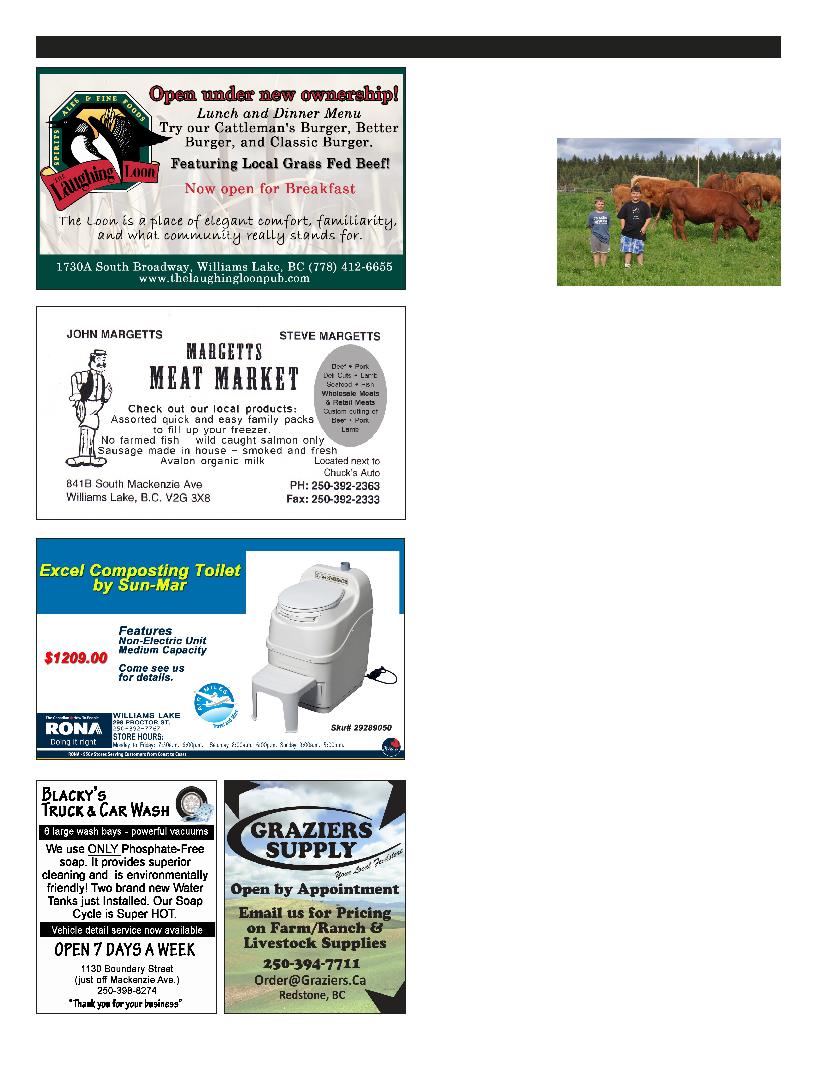
not that I stopped liking
meat, or decided that meat
consumption was unethi-
meat production at the time).
Rather, I liked it too much. I ate
more than my fair share of pork,
beef, chicken, duck, and donkey (I
drew the line at dog - dogs are
friends, not food) while teaching
English in China from 2004 to
2005, and came home with the
waistline to prove it.
weight. Since then, food and health
have become a hobby, and over the years I
have been a pescetarian, a lacto-ovo vegetar-
ian, and I have toyed with the idea of being
vegan. I have also had a fair share of rawfood
days, and have recently been exploring the
Paleo diet philosophy.
and reintroduced chicken into my diet. Red
meat, however, has been my last big hurdle--
it just gets so much bad press: high choles-
terol, increased risk of heart disease and can-
cer, hormones, antibiotics, rBGH, not to men-
tion all that methane, and the environmental
impact of a diet high in meat.
avoidance of red meat these past eight years
been justified from a health perspective?
When we moved into "cattle country" last
year I felt a reassessment was in order. While
living on the coast I ate fish--it just didn't
feel right to live so close to the ocean and not
consume a local resource. In the same vein it
doesn't feel right to dismiss beef as a source
of protein when I live among so many
ranches.
I've learned that not all meat is created equal.
Enter the grass versus grain debate. As the old
saying goes, "You are what you eat." If this
maxim holds true, then we are also that which
was eaten by what we ate.
beef market in 2009) is often fed not just corn
and soy, but "by-product feedstuff," which
can include but is not limited to stale candy,
brewery wastes, orange rinds, beet pulp,
chicken manure, newsprint, and aerobically
digested municipal garbage. Mad cow disease
is a direct result of adding meat to feed, and
the global scare it raised in 2003 cost the Ca-
nadian beef industry more than $4 billion.
grass-finished beef is the superior meat. When
a cow is raised on grass its entire life, grass-
finished, it is lower in calories than its grain-
fed counterpart, contains more healthy
omega-3 fats, more vitamins A and E, higher
levels of antioxidants, and up to seven times
the betacarotene. With this nutrient profile,
grass-fed beef is just as healthy as salmon or
skinless chicken breast. Not only that, Jo
Robinson, author of "Pasture Perfect," calcu-
lates that if the average American made the
switch from grain- to grass-fed beef, they
would save themselves 16,642 calories a year,
losing roughly five pounds (which is more
than the average dieter on a Weight Watchers
program!)
ing on how the cow is raised, with many of
the negative environmental impacts resulting
from intensive animal farming. Think back to
Walkerton, Ontario in 2000. The E. coli con-
tamination that infected 1,346 people and
killed seven was traced to manure runoff from
factory farms. In contrast, if a cow is pasture-
raised and grass-finished, manure is not de-
posited in concentrated piles, and rather than
contaminating water sources, it improves soil
quality. Greenhouse gases are a concern that
is often raised around livestock production, as
it accounts for more carbon emissions annu-
ally than all forms of transportation com-
bined. However, when cattle are raised on
pasture, the increase in carbon uptake stimu-
lated by well-managed grazing more than
offsets what is released by grass-fed cows.
my opinion one of the best ways to accom-
plish this is to create a relationship with what
you're eating. Learn where your meat comes
from and how it was raised--go out and meet
your ranchers.
just some of many local ranchers interested in
a safer, more humane, smaller scale approach
to raising cattle. Bouchard understands the
importance of providing meat locally, but as
the demand for grass-fed meat is currently
low, only a small percentage of cattle raised
in this area is available for purchase in the
Cariboo. Like other local ranches, most of the
cows from Just A Mere Ranch will end up in
feedlots in Alberta; however, you can sample
some of Bouchard's grass-finished beef at the
Laughing Loon Restaurant (I would highly
recommend the Cattleman's Burger).
the Oscar-nominated documentary Food, Inc.,
has distilled his dietary advice into a maxim
that goes: "Eat food. Not too much. Mostly
plants." It is a truly beautiful and uncompli-
cated answer to the confusing question of
what we should eat to maintain healthy bodies
and healthy lives. It reminds us to return to
the dietary basics: modest amounts of whole
foods as close to their natural state as possi-
ble. If our meat is eating the way nature in-
tended, then it will contribute to our overall
health and the well-being of our natural
world.
Maggie is enjoying her culinary explorations
and education into the realm of meat here in
the Cariboo, and welcomes the opportunity to
learn more. She'd like to thank her partner
and editor for his help, and her one-year-old
son for his unhelping.